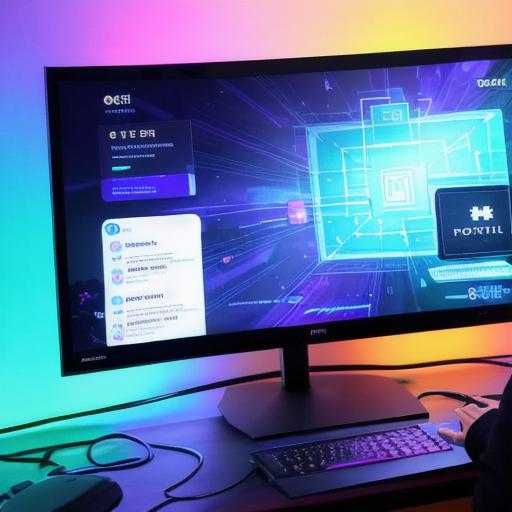Blockchain gaming is an emerging industry with immense potential, and it’s changing the way games are developed, distributed, and played. As a game developer, understanding the latest trends in blockchain gaming is crucial to staying ahead of the competition and taking advantage of the opportunities that come with this technology. In this comprehensive guide, we will explore some of the most significant trends in blockchain gaming and what they mean for game developers.
One of the most significant trends in blockchain gaming is the increasing use of decentralized finance (DeFi) elements in games. DeFi is a financial system that operates on blockchain technology, and it’s transforming traditional finance by providing more accessible and secure ways to invest, lend, and borrow money. In games, DeFi elements are used to create new revenue streams for game developers and players alike. For example, some games have implemented yield farming, which allows players to earn interest on their in-game assets by staking them in a decentralized exchange.
Another trend that’s becoming more popular in blockchain gaming is non-fungible tokens (NFTs). NFTs are unique digital assets that can represent anything from art and collectibles to in-game items and currency. They are stored on the blockchain, making them secure, transparent, and tamper-proof. NFTs have already revolutionized the art world by enabling artists to sell their work directly to collectors without intermediaries, and they have significant potential for gaming as well. For example, NFTs can be used to create unique in-game items that can be bought, sold, and traded like real assets.
Blockchain gaming also has the potential to revolutionize how games are distributed and played. One of the biggest challenges facing traditional gaming is piracy and distribution issues. With blockchain technology, however, games can be distributed securely and transparently, making it much harder for pirates to copy or distribute them illegally. Additionally, blockchain technology can enable new ways of playing games, such as peer-to-peer multiplayer games that don’t require a central server.
Another trend in blockchain gaming is the increasing use of smart contracts. Smart contracts are self-executing contracts that are stored on the blockchain and can be programmed to automatically execute when certain conditions are met. In gaming, smart contracts can be used to create new revenue streams for game developers by enabling players to purchase in-game items or services directly from the game’s smart contract. This can eliminate intermediaries and reduce transaction costs, making it easier for players to make purchases and for game developers to monetize their games.
Finally, blockchain gaming is also becoming more accessible to mainstream audiences. As more people become familiar with blockchain technology and its potential applications, we can expect to see more games being developed and released that incorporate blockchain elements. This trend will likely continue in the coming years as more people become comfortable with the technology and its potential benefits.

In conclusion, blockchain gaming is an exciting industry with immense potential for game developers. By staying up-to-date on the latest trends and technologies, game developers can take advantage of the opportunities that come with this technology and create new revenue streams and experiences for their players. Whether you’re a seasoned game developer or just starting out, understanding the latest trends in blockchain gaming is crucial to staying ahead of the competition and taking advantage of the opportunities that come with this emerging industry.
